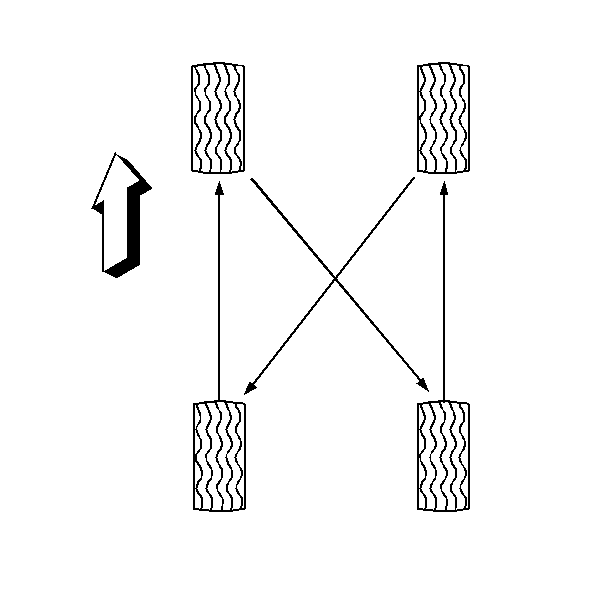In order to equalize wear, rotate the tires at the specified intervals. Refer to Maintenance Schedule in Maintenance and Lubrication. In addition to scheduled rotation, rotate the tire and wheel assembly whenever you notice uneven tire wear.
Radial tires tend to wear faster in the shoulder area, particularly in front positions, due to design. Radial tires in non-drive locations may develop an irregular wear pattern that can generate tire noise. This especially makes regular tire rotation necessary.
- Raise and support the vehicle. Refer to Lifting and Jacking the Vehicle in General Information.
- Remove the 4 center caps from the wheels.
- Remove the lug nuts from all of the 4 wheels.
- Rotate the 4 tires as shown.

Installation
- Install the lug nuts.
- Install the 4 center caps.
- Lower the vehicle.

Notice: Use the correct fastener in the correct location. Replacement fasteners must be the correct part number for that application. Fasteners requiring replacement or fasteners requiring the use of thread locking compound or sealant are identified in the service procedure. Do not use paints, lubricants, or corrosion inhibitors on fasteners or fastener joint surfaces unless specified. These coatings affect fastener torque and joint clamping force and may damage the fastener. Use the correct tightening sequence and specifications when installing fasteners in order to avoid damage to parts and systems.
Tighten
Tighten the lug nuts for all 4 wheels in the sequence shown to 190 N·m
(140 lb ft).
